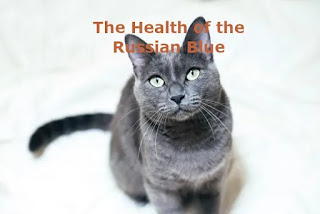The Health of the Russian Blue - Best Pets 4 Home
The Health of the Russian Blue
Our home is vet-visited and endorsed for excellent health, practice, and care. Vet references are available on request.
Check this link for the most comprehensive list of cat-safe plants to date:aspca.org
Many people are concerned about the health and genetic problems associated with pedigree cats, and indeed, it can be perceived as unethical to either breed or adopt a pedigree cat in preference to the ‘more natural and robust’ moggy.
Moggies do not tend to suffer from the same genetic complications of certain pedigree cat breeds. However, whilst certain pedigree breeds are indeed associated with a number of genetic or physical conditions, moggies also suffer from congenital conditions and tend to be at much greater risk of encountering or carrying a variety of infectious diseases (for example, FELV) and they can equally inherit such lethal diseases as Hypertrophic cardiomyopathy (HCM). Indeed, many queens develop FeLV after mating with the local Romeo, who has caught it during territorial fights or previous matings, and her babies will go on to catch it from her. Should the local Romeo carry heart disease in his genetic background, then by widely mating to his offspring and siblings, it is possible that he will consolidate this disease within the local feline population.
Our vet illustrated this concept by telling us about the moggy population of Northampton, who have developed polydactyly, or 6 toes. Like in many towns, un-neutered male cats mate their daughters, sisters, cousins, etc and the offspring, in turn, mate each other. Because they all look very different, we do not realize that they are far more closely related than most pedigree cats, until something outwardly obvious, such as having 6 toes, becomes the norm.
An ethical and responsible breeder will always endeavor to select matings that will reinforce their breed’s genetic strength, and they will be willing to discuss potential or past genetic problems of their chosen breed. A good breeder will ensure that their cats do not have the opportunity to contract infectious diseases from the local moggy population, and will ensure that their adults and kittens are fully up to date with their vaccinations, as are the adults used in their breeding programs. As a result, a pedigree kitten should arrive in your home at the peak of physical fitness, at an age when they have reached optimal emotional and socialization stability.
We regularly test a selection of our cats and kittens to ensure that we are free of various diseases. We have recently tested negative for FeLV, FIP, FIV, Herpes, Chlamydia, Bordetella, and ringworm. We also do not have Tritrichomonas fetus or Giardia. None of our cats and kittens have any internal or external parasites (worms or fleas). We do not vaccinate for FeLV, as the vaccine carries a risk of giving it to our cats, and owner vaccination of our cats and kittens with the FeLV vaccine is at the owner’s risk and voids our health guarantees. Our adults are regularly vaccinated against Bordetella, to protect them at cat shows.
Unlike some other pedigree breeds, the Russian Blue breed is not specifically associated with any genetic or inheritable diseases. The Russian Blue cat is susceptible to the same feline illnesses and diseases as non-pedigree cats, but generally, they have a 10 to 15 year expected life span and do not require any more veterinarian treatment than other cats of similar ages, including moggies. Some have lived to the age of 21.





